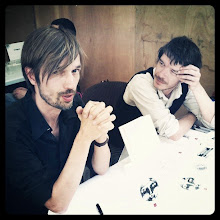The poet Max Jacob died from curiosity. This is what his lodger in Saint Benoît sur Loire, the doctor Persillard, said. Born Jew, Max worked hard on becoming a catholic saint after having met Christ. At the age of 45, he left his parisian famous friends and moved to Saint Benoît near the abbaye de Fleury, where he lived from 1921 to his death in 1944, in the Drancy camp. Max had visitors in his retreat. Everytime the bell rang, he took a look in the street. This was not the best thing to do in 1944, being Jew: his last visitor was the Gestapo, searching for human fuel.

The abbaye de Fleury in Saint Benoît, from which the monks had been expelled after 1789, became a monastery again in october 1944, six months after Max's death. Its story goes back 1500 years, when the relics of Saint Benoît (480-547) and his sister Sainte Scholastique were brought back from the Mont Cassin in Italy. Mommole, priest of Fleury, red the saint's portrait and miracles in a « book » written by the future pope Grégoire Le Grand (540-604). It's interesting to see that « books » could become best sellers and travel all around Europe in the year 500, in a time of invasions, at the end of the Roman empire.

One Grégoire's chapter reminds me of The Wicker Man movie: a jealous priest organizes a celtic round dance of naked virgins near Benoît's first monastery in Subiaco, for tempting the young monks who gathered around him. This is why the saint moved to the Mont Cassin. At the end of his life, Saint Benoît had a vision in which he saw the destruction of his second monastery, which happened shortly after his death. After closing this admirable book, Mommole decided to send two guys to bring back the saint and his sister bones. 1500 years later, the relics still are in the abbaye de Fleury's crypt.

This is what Max Jacob said about Saint Benoît sur Loire: « Saint-Benoît is one of the most beautiful scenery in the world, the most beautiful balance between the masses of stone, the masses of greenery and the water mass. And do not forget that there is another mass: the silence. You see, there is the Trinity: stone, greenery and water. But the Trinity, we'll put it on four wheels by adding the silence. »


<< Home